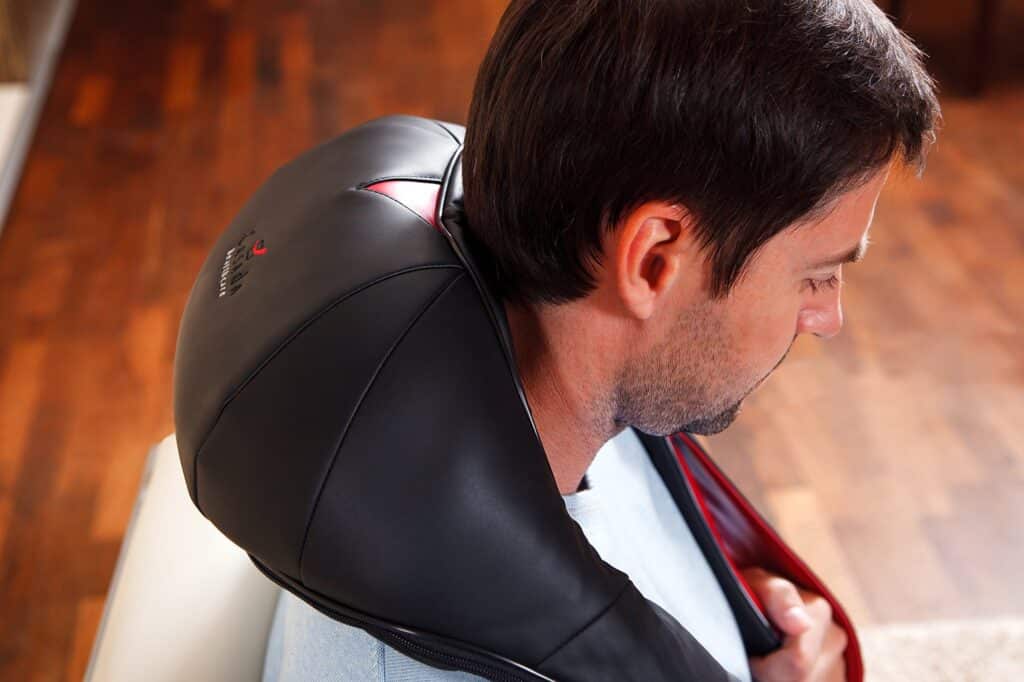Introduction
Does Magnetic Therapy Work For Weight Loss: Magnetic therapy, also known as magnet therapy or biomagnetic therapy, is rooted in the belief that magnets can influence the body’s natural electromagnetic field, thereby promoting healing and wellness. This practice has been used for centuries in various forms across different cultures, from ancient Chinese medicine to traditional European folk remedies. However, the application of magnetic therapy for weight loss is a more recent and controversial development.
Proponents of magnetic therapy for weight loss argue that placing magnets on specific areas of the body can stimulate blood flow and increase the metabolic rate. They claim that these effects can lead to the burning of calories and a reduction in body fat over time. Magnetic products designed for weight loss typically come in the form of magnetic bracelets, rings, insoles, or patches, which users are encouraged to wear throughout the day.
On the other hand, skepticism surrounds the efficacy of magnetic therapy for weight loss due to the lack of robust scientific evidence supporting these claims. Critics argue that any potential benefits observed by users might be attributed to a placebo effect or lifestyle changes, such as increased physical activity or improved dietary habits, rather than the magnets themselves.
To date, the scientific community has not reached a consensus on the effectiveness of magnetic therapy for weight loss. While some studies have explored the impact of magnetic therapy on metabolism and weight management, the results have been inconclusive and often contradictory. Researchers continue to investigate this topic, but more rigorous and well-designed clinical trials are needed to provide definitive answers.
In the following sections, we will delve deeper into the principles of magnetic therapy, examine the existing research, and assess the potential risks and benefits associated with its use for weight loss. Additionally, we will explore alternative weight loss methods that have a stronger scientific foundation and broader consensus within the medical community.

Where do you put magnets for weight loss?
Place a magnet on the Shen Men, which is the point located in the anti-helix part of the ear. This cartilage area in just below the helix (upper outer rim of ear).
Where to Place Magnets for Weight Loss
Ear Magnets: One of the most common methods involves placing small, specialized magnets on specific points of the ear, often referred to as “ear magnets” or “auricular magnets.” This technique is believed to stimulate the appetite-suppressing points in the ear, potentially reducing food cravings and overeating.
Magnetic Toe Rings: Another approach involves wearing magnetic toe rings. The idea is that these rings will stimulate pressure points in the toes, which may help control appetite and reduce overall calorie intake.
Magnetic Insoles: Magnetic insoles are designed to be inserted into your shoes, and they are believed to work by stimulating reflexology points on the feet. Proponents claim that these insoles can help regulate appetite and metabolism.
Magnetic Waistbands and Belts: Some individuals use magnetic waistbands or belts, which are worn around the waist or midsection. The belief is that these magnetic accessories can increase blood circulation in the abdominal area, potentially aiding digestion and weight management.
Magnetic Jewelry: Magnetic jewelry, such as bracelets and necklaces, is also marketed for weight loss. Wearing magnetic jewelry is said to have a holistic effect on the body, potentially improving overall well-being and indirectly contributing to weight loss.
How does magnet therapy work for weight loss?
Magnetic brain stimulation causes weight loss by making gut bacteria healthier. A new study finds that a noninvasive electromagnetic brain stimulation technique helps obese people lose weight, partly by changing the composition of their intestinal bacteria—the so-called gut microbiota.
The Theoretical Mechanisms of Magnet Therapy for Weight Loss
Stimulation of Acupressure Points: Magnet therapy often draws inspiration from traditional Chinese medicine and acupuncture. Proponents believe that magnets, when placed on specific acupressure points on the body, can stimulate these points, leading to improved energy flow and balance. This stimulation is thought to affect appetite regulation, metabolism, and digestion, potentially reducing food cravings and aiding in weight management.
Improved Blood Circulation: Some advocates of magnet therapy claim that magnets can enhance blood circulation in the areas where they are applied. Improved blood flow may help transport nutrients and oxygen more efficiently, potentially supporting the body’s natural metabolic processes and assisting in the breakdown of fat stores.
Energy Balance: Magnet therapy is based on the principle of restoring balance to the body’s energy pathways, often referred to as meridians. When these energy channels are believed to be balanced, it is thought to promote overall well-being and may indirectly contribute to weight loss by reducing stress, promoting relaxation, and improving sleep quality.
Appetite Suppression: A common application of magnet therapy for weight loss involves placing magnets, often referred to as “ear magnets,” on specific points of the ear. Advocates argue that this can help suppress appetite and curb cravings, potentially leading to reduced calorie intake and weight loss.
Enhanced Metabolism: Some proponents of magnet therapy suggest that magnets can have a positive influence on the body’s metabolism, potentially increasing the rate at which calories are burned. This could lead to greater energy expenditure and, in the long term, weight loss.
Does magnetic therapy really work?
The small amount of research that has been done on electromagnetic and static magnet therapy for pain related to cancer and chemotherapy treatments has not shown a beneficial effect. The quality of the reviewed studies was low due to their small sizes and short durations.
Common Applications of Magnetic Therapy
Pain Management: One of the primary uses of magnetic therapy is for pain relief, particularly for conditions like arthritis, muscle aches, and joint pain. Magnetic bracelets, wraps, and pads are often marketed as tools to alleviate discomfort.
Inflammation Reduction: Magnetic therapy is also thought to have anti-inflammatory effects. Advocates argue that exposure to magnetic fields can help reduce swelling and inflammation associated with injuries or chronic conditions.
Improved Circulation: Some proponents suggest that magnetic therapy can enhance blood circulation, which may lead to improved oxygen and nutrient delivery to tissues and better overall health.
Mental Well-being: Magnetic therapy products like magnetic mattress pads and pillows are marketed as promoting relaxation and better sleep quality, potentially contributing to mental well-being.
The Scientific Perspective
The scientific community remains divided on the effectiveness of magnetic therapy. While some studies have reported positive effects, the overall evidence is far from conclusive. Many well-designed clinical trials have failed to demonstrate significant benefits of magnetic therapy over a placebo. Factors such as the placebo effect, subjective reporting of pain relief, and the lack of a clear mechanism of action have led to skepticism among scientists and healthcare professionals.
Where is the pressure point for weight loss?
The GV 26 pressure point is used to help control your appetite to influence weight loss. Find this point in the area between your nose and upper lip. The crease in that area is called the philtrum. Place your index finger on the GV 26 point.
Common Pressure Points Associated with Weight Loss
Ear Points: Proponents of pressure point therapy for weight loss often focus on specific points in the ear. These are believed to influence appetite, food cravings, and overall eating behavior. Some advocates recommend using ear magnets or applying pressure to these points to reduce hunger.
Abdominal Points: Acupressure points on the abdomen are thought to affect digestion and metabolism. Stimulating these points is believed to enhance the body’s ability to process food efficiently and potentially lead to weight loss.
Ankle Points: Points on the ankles are believed to be connected to the spleen and kidneys, which are thought to play a role in weight management. Acupressure or massage on these points is suggested to help with fluid retention and metabolism.
Scientific Perspective and Limitations
While pressure points have been studied for various health conditions, the scientific evidence supporting their use for weight loss is limited and often inconclusive. Most studies in this area are small, lack proper control groups, and rely heavily on self-reporting, making it challenging to draw definitive conclusions.
Moreover, the concept of pressure points for weight loss is met with skepticism by many healthcare professionals and researchers. Weight management is a multifaceted process influenced by factors such as diet, physical activity, genetics, and overall health. The idea that stimulating specific points on the body can lead to significant and sustainable weight loss is considered implausible by many experts.
What are the side effects of magnetic therapy?
Magnet treatment is relatively safe. Some patients may experience dizziness, low energy, palpitation, nausea, and vomiting. Side effects can include a decrease in blood pressure, or local skin areas can become itchy, burning, and painful; however, side effects only happen in a very small percentage of cases.
Skin Irritation
One of the most commonly reported side effects of magnetic therapy is skin irritation. This can occur when individuals wear magnetic jewelry, such as bracelets or necklaces, for extended periods. Prolonged contact with the skin can lead to redness, itching, and even a rash. To minimize the risk of skin irritation, it’s crucial to ensure that the magnetic products are made of hypoallergenic materials and to limit the duration of wear.
Interference with Medical Devices
Magnetic therapy may pose risks to individuals with certain medical devices. Strong magnets can interfere with the functioning of pacemakers, defibrillators, and other implanted devices. It is crucial for individuals with such devices to consult their healthcare providers before using magnetic therapy products and to heed any warnings provided by the device manufacturer.
Discomfort and Headaches
Some people may experience discomfort or headaches when exposed to strong magnetic fields for extended periods. This is particularly relevant when using high-strength magnets or magnetic mattresses. The discomfort can vary from person to person, and it is advisable to discontinue use if such side effects occur.
Lack of Scientific Evidence
While not a direct side effect, it is essential to consider the potential consequences of relying on magnetic therapy without solid scientific evidence. The lack of rigorous, well-designed clinical trials supporting the efficacy of magnetic therapy for various health conditions raises questions about its reliability and safety. Individuals should be cautious about investing time and money in treatments that may have limited or unproven benefits.
Are magnets safe for your body?
A strong magnetic field does no harm to the human body with cautious handling. According to British Pre-Standard No. 50166-1, there is no health risk to the human body in daily cleaning and handling if the magnetic field level is below 3000 Gauss [1].
Magnetic Jewelry: Many people wear magnetic jewelry, such as bracelets and necklaces, for various perceived health benefits, including pain relief and improved circulation. These low-strength magnets are generally safe for most individuals and are unlikely to cause harm. However, it’s essential to ensure that the jewelry is made from non-allergenic materials to prevent skin irritation.
Magnetic Mattress Pads: Magnetic mattress pads and toppers contain magnets embedded in the material. They are designed to provide magnetic therapy while you sleep. When used as directed, these products are generally safe for most people. However, individuals with implanted medical devices, such as pacemakers or defibrillators, should consult their healthcare provider before using magnetic mattress pads, as strong magnetic fields can interfere with these devices.
Magnetic Therapy Devices: There are specialized magnetic therapy devices like magnetic belts, wraps, and insoles that are used for various purposes, including pain relief and relaxation. As with magnetic jewelry, these devices are generally safe when used correctly and for short periods. People with implanted medical devices or pregnant individuals should exercise caution and consult their healthcare provider before using such products.
Magnetic Resonance Imaging (MRI): Magnetic resonance imaging is a widely used medical diagnostic tool that employs strong magnetic fields and radio waves to produce detailed images of the body’s internal structures. MRI is considered safe for the majority of individuals. However, certain metal implants or objects within the body can pose risks in an MRI environment, as they may be attracted to the magnetic field or heat up. Medical professionals will assess the safety of MRI for each patient before the procedure.
Magnetic Toys: Small, powerful magnets found in some toys or office supplies can be hazardous, especially if ingested. Swallowing multiple magnets can lead to serious health issues, such as intestinal blockages, and may require surgical intervention. Parents should be vigilant and keep small magnets away from young children.
Can magnetic belt reduce belly fat?
People feel that wearing slimming belt melts fat from the waistline area. But as we all know, this is not possible because there is no scientific evidence to support the claim of spot reduction (losing fat from one body part). Our body burns the stored fat in an overall proportion.
Understanding Magnetic Belts
Stimulation of Metabolism: Advocates suggest that the magnets can increase metabolic rate, leading to more efficient calorie burning and fat loss.
Improved Blood Circulation: It is believed that magnetic fields can enhance blood circulation in the abdominal region, potentially promoting the breakdown of fat cells.
Appetite Suppression: Some magnetic belts are designed to be worn around the waist and are said to suppress appetite, helping individuals eat less and reduce calorie intake.
The Lack of Scientific Evidence
While the concept of using magnets for weight loss is intriguing, the scientific evidence supporting magnetic belts for belly fat reduction is extremely limited. Most of the claims made by manufacturers and proponents lack rigorous scientific validation. Weight loss is a complex process influenced by various factors, including diet, physical activity, genetics, and overall health. The idea that wearing a magnetic belt alone can significantly reduce belly fat is not supported by scientific research.
The Placebo Effect and Psychological Factors
It’s important to consider the placebo effect and psychological factors when evaluating the effectiveness of magnetic belts. Some individuals may experience temporary reductions in waist measurements or perceived improvements in their appearance due to the belief that the magnetic belt is working. These effects are often short-lived and may not result in long-term fat loss.
How long does it take for magnetic therapy to work?
Some patients notice benefits sooner, after just a couple of weeks of treatment, while it takes four to five weeks for others to notice results.
Individual Variation
One of the crucial factors that affect the time it takes to experience the effects of magnetic therapy is individual variation. People’s responses to this therapy can vary widely. Some individuals may report immediate relief from pain or discomfort, while others may not notice any significant changes for weeks or even months. It’s essential to remember that individual factors, such as the type and severity of the condition being treated, overall health, and sensitivity to magnetic fields, can all play a role in the timing of results.
Type of Condition
The nature and severity of the health condition being addressed with magnetic therapy can significantly influence how long it takes to see results. Some acute conditions, such as minor muscle strains or joint discomfort, may respond more quickly to magnetic therapy. In contrast, chronic conditions, like long-term pain or inflammation, may require more time and consistent use of magnetic products to notice any meaningful improvement.
Duration and Consistency of Use
Consistency in using magnetic therapy products is a critical factor in achieving the desired results. Magnetic therapy often involves wearing magnetic jewelry, using magnetic wraps or pads, or sleeping on magnetic mattresses or toppers. To maximize the potential benefits, individuals are typically advised to use these products consistently over an extended period.
The duration of use can vary depending on the individual and their specific health goals. Some people may experience relief after a few days or weeks of consistent use, while others may require several months. It’s essential to follow the recommended usage guidelines provided by the manufacturer or a healthcare professional for the best chances of success.
Managing Expectations
It’s important to manage expectations when considering magnetic therapy. While some individuals may experience significant relief or improvements in a relatively short period, others may not achieve the same results. Magnetic therapy is often regarded as a complementary approach rather than a guaranteed solution. It may not provide immediate or complete relief for all conditions.
Consulting a Healthcare Professional
Before embarking on magnetic therapy for a specific health concern, it’s advisable to consult with a healthcare professional. They can provide guidance on whether magnetic therapy is an appropriate option for your condition and offer insights into the expected timeline for potential benefits.

Conclusion
In the quest to find innovative and alternative approaches to weight loss, magnetic therapy has emerged as a topic of interest and discussion. However, after a thorough examination of the principles behind magnetic therapy and a review of the available scientific evidence, it becomes clear that the question of whether magnetic therapy works for weight loss remains shrouded in uncertainty.
Proponents of magnetic therapy believe that magnets can influence the body’s energy flow and metabolism, potentially leading to weight loss. Nonetheless, skeptics argue that the lack of conclusive scientific evidence to support these claims leaves magnetic therapy in a realm of controversy.
While some studies have explored the potential effects of magnetic therapy on metabolism and weight management, the results have been inconsistent and often inconclusive. These studies are plagued by methodological limitations and small sample sizes, making it difficult to draw definitive conclusions about the efficacy of magnetic therapy for weight loss.
In light of the limited scientific support and the ongoing debate surrounding magnetic therapy, individuals seeking effective and evidence-based methods for weight loss may want to consider more established approaches. Traditional methods such as a balanced diet, regular physical activity, and consultation with healthcare professionals remain the cornerstone of safe and sustainable weight management.


1 comment
Very interesting details you have remarked, thank you for putting up.Money from blog